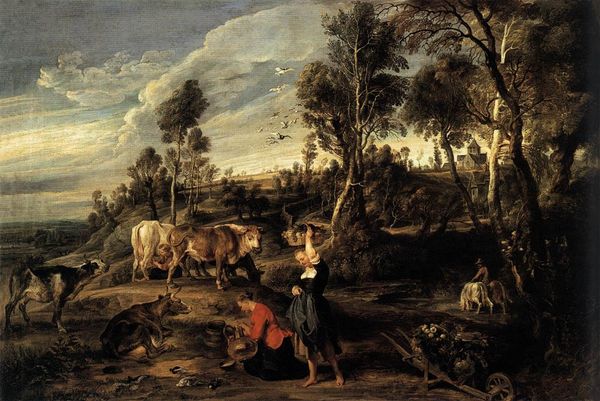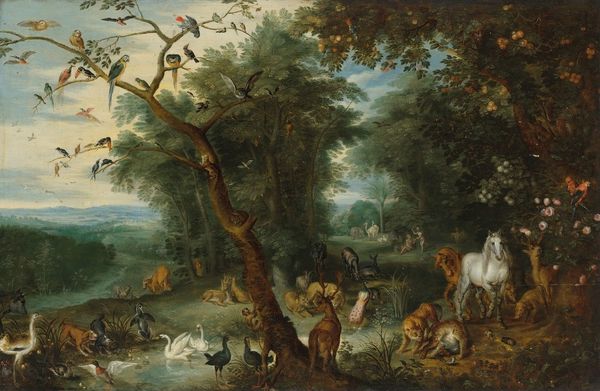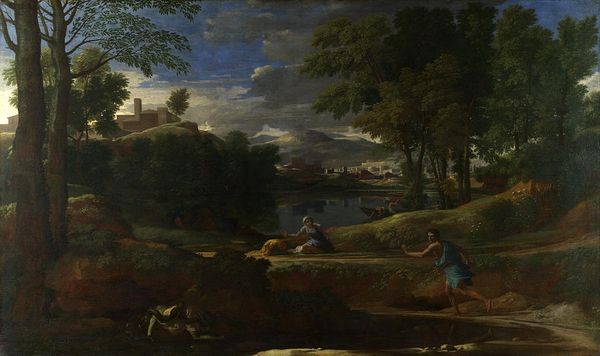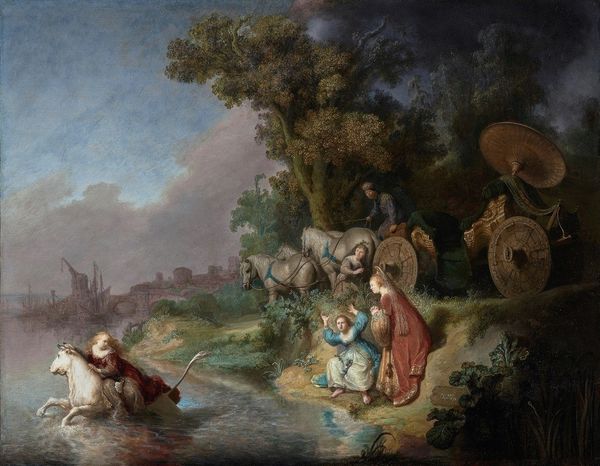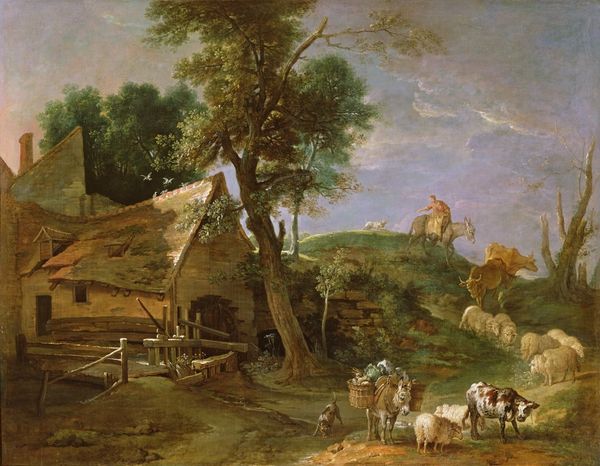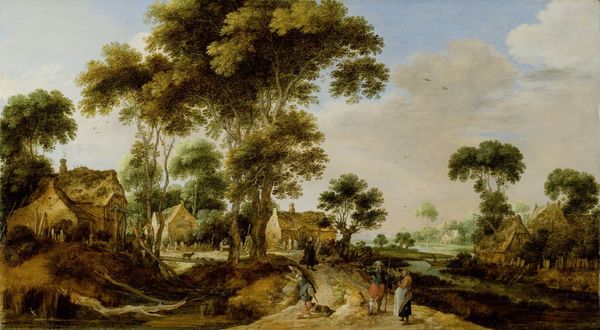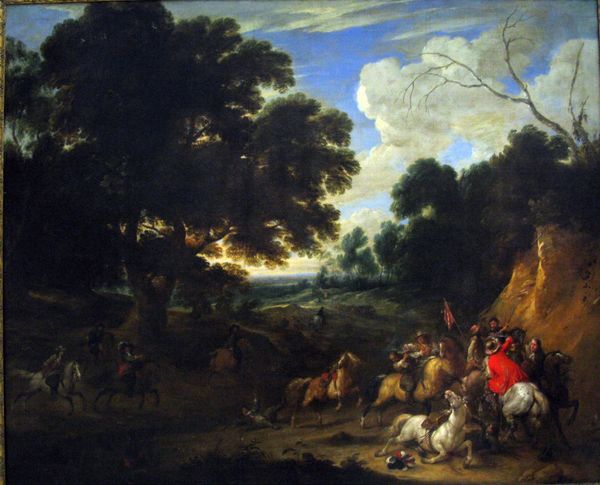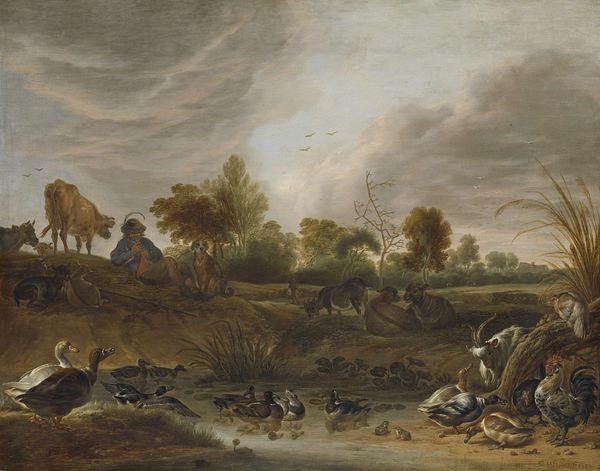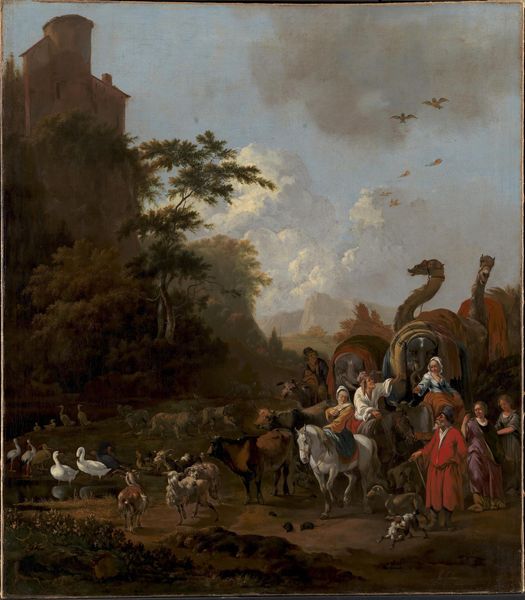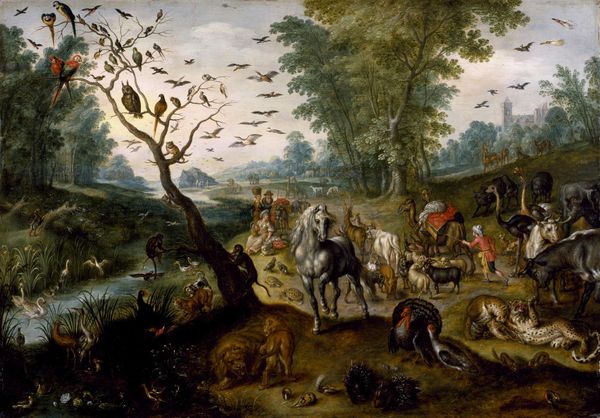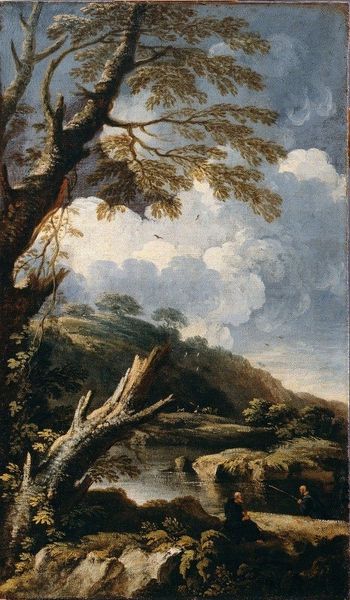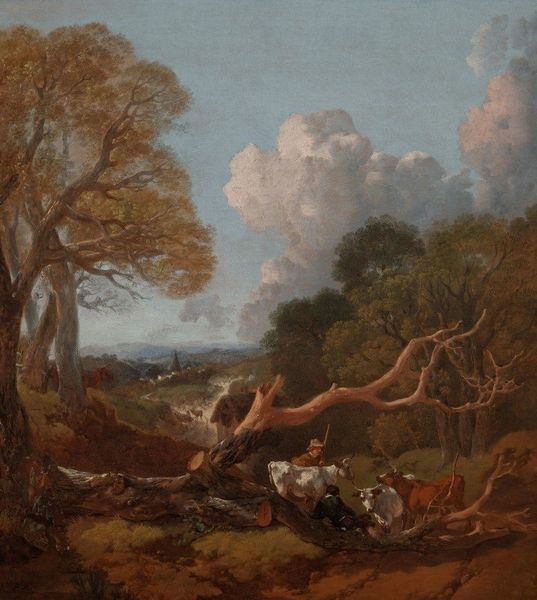
Orpheus with Animals in a Landscape 1640
0:00
0:00
aelbertcuyp
Museum of Fine Arts (MFA), Boston, MA, US
oil-paint
#
baroque
#
dutch-golden-age
#
oil-paint
#
landscape
#
figuration
#
oil painting
#
genre-painting
Copyright: Public domain
Editor: Here we have Aelbert Cuyp's "Orpheus with Animals in a Landscape," painted around 1640 with oil on canvas. The scale is impressive! It almost feels like looking into a zoo scene frozen in time. What jumps out at you in this composition? Curator: The painting employs a fascinating contrast in spatial organization. Notice how the painter meticulously places the collection of animals on what appear to be two hillocks to divide the picture plane, one to the left and the other to the right? Editor: Yes, there seems to be almost a calculated division within what feels like an abundant natural scene. Curator: Precisely. Further, the formal interplay of light and shadow merits attention. Consider the illumination focusing primarily on the animals near Orpheus versus the almost obscured creatures to the periphery on the left, which renders a soft effect. It's an organizational decision with pronounced impact. Note also the chromatic scale to highlight details, specifically where he sits under a tree on the right! Editor: You’re right, the use of lighting really brings attention to the details, like the texture of the animals’ fur. It draws you into certain parts of the work. What purpose does the use of light provide in creating that composition? Curator: The illumination here serves as both an aesthetic and structural device. It controls our gaze, directs it towards focal points within the pictorial space, creating a deliberate visual rhythm. The semiotic intention embedded is to bring all types of nature toward Orpheus, who's melody seems to soften even predators into companions, united together in form through a tonal unity in application of paint. Editor: This perspective is amazing! I initially thought this was merely a pleasant landscape but seeing how meticulously organized the whole composition is provides new insights into the complexity and sophistication of Cuyp’s construction. Curator: Indeed. Formal analysis allows us to engage deeply with the mechanics of visual expression within artworks like this.
Comments
No comments
Be the first to comment and join the conversation on the ultimate creative platform.
